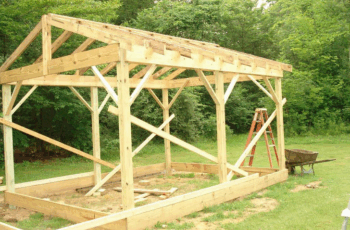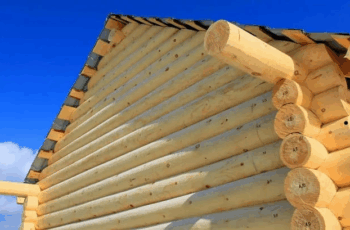
There’s something special about a log cabin—the coziness, the natural beauty, the feeling of being off the grid. But what if you could take that feeling with you? That’s the magic of mobile log cabins. These portable getaways let you enjoy the charm of cabin living without being tied to one spot. Whether you’re a weekend adventurer, a digital nomad, or just someone who loves a little flexibility, building your own mobile log cabin is an exciting and rewarding project.
Let’s break down how to make it happen, step by step.
Choosing the Right Materials: Keep It Light, But Strong
When you’re building something that’s going to hit the road, weight matters—a lot. That’s why materials need to strike the perfect balance between durability and portability.
Start with lightweight logs like cedar or pine. They’re strong, attractive, and won’t weigh your cabin down too much. Just make sure they’re treated properly to stand up to weather and travel.
For insulation, go with materials like recycled denim, sheep’s wool, or foam board—they’re lightweight and still do a solid job of keeping you warm in winter and cool in summer.
As for the roof and floor, think metal roofing (like aluminum) and vinyl flooring. Both are tough, light, and built for life on the move.
Building the Cabin: A Strong Foundation is Everything
A mobile cabin still needs to be rock-solid—just on wheels.
1. Start with the base.
Build your cabin on a sturdy trailer or skid foundation. This is the frame that carries the weight of the entire structure, so don’t skimp here. Make sure it’s rated to handle the full load and allows for safe towing.
2. Stack your log walls smartly.
Use traditional corner notching techniques to interlock the logs securely. Keep things lightweight by using slimmer logs or log siding over a framed structure, especially if weight restrictions are tight.
3. Mind the openings.
Install lightweight windows and doors—aluminum or composite materials work great. Make sure everything seals tightly so you don’t lose heat or get air leaks during travel.
Inside the Cabin: Comfort Meets Portability
Just because it’s mobile doesn’t mean it can’t feel like home. You can still enjoy rustic touches without making your cabin too heavy.
Floors and walls
Use laminate or vinyl plank flooring to keep things light and durable. For the walls, go with wood paneling or shiplap to get that cozy, cabin feel without the bulk.
Plumbing and electrical
Install compact systems designed for small spaces. Think tankless water heaters, low-flow fixtures, and 12V off-grid lighting systems. You’ll save space and conserve energy, especially useful if you plan to go off-grid.
Making It Move: How to Stay Mobile and Safe
Mobility is the whole point—so your setup needs to travel well.
Wheels and towing system
Attach your cabin to a solid trailer base with evenly distributed weight. The axle(s) and wheels should match the load and terrain you expect to encounter. Use a heavy-duty hitch and braking system for added safety.
Ready for the road?
Before you roll out, do a full check: secure the roof, fasten all doors and windows, and double-check tie-down points. It’s also smart to inspect your trailer tires, brakes, and frame regularly, especially before long drives.
Final Thought: Take Your Cabin Wherever Life Leads
A mobile log cabin isn’t just a structure—it’s a lifestyle. It’s freedom with comfort, nature with movement. With the right materials, a solid build, and a little creativity, you can create a retreat that travels with you. Whether you’re chasing warmer weather, exploring off-grid living, or just love having the option to pick up and go, your portable cabin can be a cozy home wherever you decide to park it.
So go ahead—build the cabin you’ve always dreamed of… and take it on the road.


